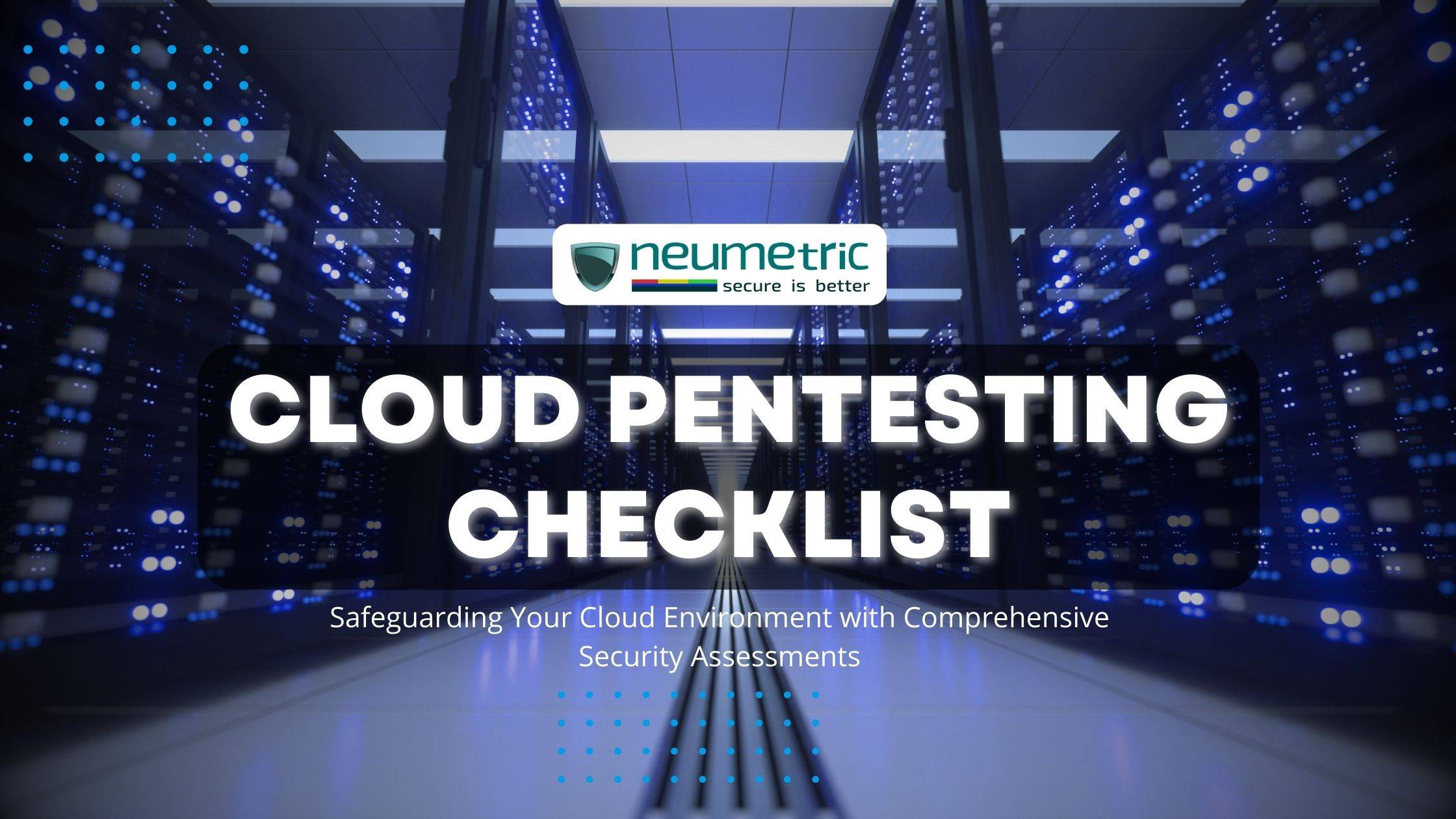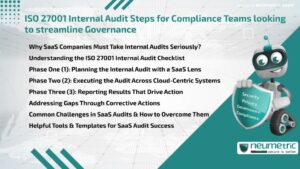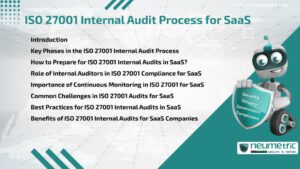Table of Contents
ToggleIntroduction
Cloud Pentesting, short for Cloud Penetration Testing, is the process of assessing the security of cloud environments by simulating real-world cyberattacks. It involves conducting controlled tests to identify vulnerabilities, weaknesses & misconfigurations that could be exploited by malicious actors. By thoroughly evaluating cloud infrastructure, configurations & applications, pentesters can help ensure the Confidentiality, Integrity & Availability [CIA] of data stored in the cloud, safeguarding against data breaches, unauthorised access & service disruptions.
This cloud pentesting checklist focuses on providing a comprehensive cloud pentesting checklist to help organisations enhance the security of their cloud deployments. The cloud penetration checklist covers various aspects of cloud security assessment, including initial preparation, reconnaissance, vulnerability scanning, authentication & access control testing, network security analysis, web application testing, data storage security evaluation & incident response testing. Each item on the checklist is accompanied by detailed explanations, best practices & practical tips to guide organisations through the process of conducting a thorough cloud pentest.
Understanding Cloud Infrastructure
Cloud computing has revolutionised access to computing resources for businesses & individuals. Three primary cloud computing models have gained popularity: Infrastructure as a Service [IaaS], Platform as a Service [PaaS] & Software as a Service [SaaS]. IaaS enables users to access virtualized computing resources, including virtual machines, storage & networking infrastructure. PaaS provides a development platform with operating systems, programming languages & databases for application development & deployment. SaaS delivers software applications via the internet on a subscription basis, allowing users to access them through web browsers without local installations. SaaS offers a wide range of applications like CRM, ERP & productivity tools.
Cloud service providers are companies that offer cloud computing services. Amazon Web Services [AWS] is a leading provider known for its extensive range of services & global infrastructure. Microsoft Azure provides a comprehensive suite of cloud services, integrating well with Microsoft’s ecosystem. Google Cloud offers scalable & flexible solutions, leveraging Google’s expertise in data analytics & machine learning.
Understanding the cloud infrastructure allows pentesters to evaluate the effectiveness of security measures implemented by organisations in their cloud environments, ensuring the protection of sensitive data & minimising the risk of unauthorised access or data breaches.
Preparing for Cloud Pentesting
- Defining objectives & scoping the pentest: It is crucial to clearly define the objectives of the cloud pentest, such as identifying vulnerabilities, testing incident response or assessing compliance. Scoping the test involves determining the scope of the target cloud environment, including specific assets, applications & services to be tested.
- Obtaining proper authorization & legal considerations: Before conducting a cloud pentest, obtaining explicit authorization from the organisation that owns or manages the cloud environment is essential. It ensures legal compliance & prevents any unintended consequences.
- Gathering relevant information about the target cloud environment: Collecting information about the cloud provider, services used, network architecture & access controls helps in identifying potential vulnerabilities & planning appropriate testing techniques.
- Identifying potential risks & attack vectors: This involves assessing the configuration of cloud resources, authentication mechanisms, data storage & network security. Identifying weak points & possible exploitation scenarios helps prioritise testing efforts & focus on critical areas during the pentest.
Cloud Pentesting Checklist
- Reconnaissance & information gathering: Thorough reconnaissance helps understand the attack surface.
- Vulnerability assessment & scanning: Identifying weaknesses through comprehensive assessments.
- Authentication & access controls testing: Evaluating security measures & identifying weaknesses.
- Configuration & security review of cloud services: Ensuring proper configuration & hardening against attacks.
- Data protection & encryption assessment: Evaluating mechanisms to protect sensitive data.
- Network security testing & segmentation review: Identifying weaknesses & isolating critical assets.
- Web application security assessment: Identifying & remediating web app vulnerabilities.
- API security testing: Ensuring API security & preventing unauthorised access.
- Container & serverless architecture assessment: Identifying vulnerabilities in containers & serverless setups.
- Incident response & disaster recovery testing: Preparing for security incidents & disruptions.
- Compliance & regulatory review: Ensuring compliance with data privacy & security regulations.
Tools & Techniques for Cloud Pentesting
Cloud pentesting requires specialised tools to effectively assess the security of cloud environments. Popular cloud pentesting tools includes:
- Cloud Security Assessment Tools: Scout Suite automates security assessment & compliance checks for AWS, Azure & GCP. CloudMapper generates visual maps of AWS environments for identifying attack paths & misconfigurations.
- Vulnerability Assessment Tools: Nessus identifies vulnerabilities & misconfigurations in cloud environments. OpenVAS is an open-source tool for comprehensive vulnerability scanning & reporting.
- Web Application Testing Tools: OWASP ZAP detects web app vulnerabilities like XSS & SQL injection. Burp Suite manipulates web requests & uncovers attack vectors.
- API Testing Tools: Postman tests & inspects API responses. OWASP API Security Project provides tools like REST Security & API Security Testing Guide.
Virtual machines [VMs] & containers are widely used tools in cloud pentesting. VMs allow testers to create isolated environments to simulate various attack scenarios without affecting the production infrastructure. They provide flexibility to test different operating systems & configurations. Containers, on the other hand, offer lightweight & portable environments that can be easily deployed & scaled. Tools like Docker & Kubernetes enable testers to set up & test applications in isolated containers, ensuring security & minimising the risk of impacting the live environment. VMs & containers are valuable assets for conducting safe & controlled penetration testing in cloud environments.
Best practices for effective reconnaissance & vulnerability scanning includes,
- Use Open-Source Intelligence [OSINT] techniques to gather information about the target cloud environment, such as domain names, IP addresses & subdomains.
- Conduct passive reconnaissance by monitoring public forums, social media platforms & online communities for any leaked or exposed information related to the target cloud environment.
- Perform active reconnaissance using tools like DNS enumeration, email footprinting & web crawling to gather additional information about the target’s infrastructure & applications.
- Leverage manual testing techniques, such as manual source code review or manual configuration review, to identify complex vulnerabilities that automated tools might miss.
- Document & track all findings, including relevant details & evidence, to aid in vulnerability remediation & subsequent testing iterations.
Exploitation techniques specific to cloud environments:
- Misconfiguration Exploitation: Exploiting misconfigurations in cloud services, such as storage buckets or virtual machines, to gain unauthorised access, extract sensitive data or disrupt services.
- Instance Metadata Abuse: Leveraging the metadata service provided by cloud platforms to extract valuable information about the cloud instances, including credentials, access keys & sensitive configuration details.
- Server-Side Request Forgery [SSRF]: Exploiting SSRF vulnerabilities in cloud applications to make unauthorised requests to internal resources, bypass security controls or exfiltrate sensitive data.
- API Abuse: Abusing cloud provider APIs to escalate privileges, execute unauthorised actions or perform reconnaissance to gather information about the cloud environment.
- Container Escape: Exploiting vulnerabilities in containerization technologies to escape container environments & gain unauthorised access to the underlying host system or other containers.
Reporting & Remediation
- Documentation of findings & vulnerabilities: Thoroughly documenting the findings & vulnerabilities discovered during the cloud pentest ensures that all identified issues are accurately recorded, including their impact & potential risk level.
- Prioritising & categorising identified risks: Prioritising the identified risks based on their severity, likelihood of exploitation & potential impact helps organisations allocate resources effectively & address the most critical vulnerabilities first.
- Providing actionable recommendations for remediation: Delivering clear & actionable recommendations for addressing the identified vulnerabilities helps organisations understand the necessary steps to remediate the issues & improve the security posture of their cloud environment.
- Collaboration with cloud service providers for mitigation: Collaborating with cloud service providers is essential for addressing any vulnerabilities or misconfigurations in their services. Engaging in a dialogue with providers helps ensure timely & effective mitigation actions are taken to address the identified risks.
Continuous Monitoring & Improvement
- Importance of ongoing monitoring for cloud security: Continuous monitoring is crucial to detect & respond to security threats & incidents in real-time. It helps ensure the integrity, availability & confidentiality of data & resources in the cloud environment.
- Implementing security controls & configurations: Applying robust security controls, such as firewalls, intrusion detection systems & access controls & properly configuring cloud services & resources help establish a strong security foundation & mitigate potential risks.
- Regular reassessment & pentesting to identify new vulnerabilities: Regular reassessment & penetration testing are essential to identify new vulnerabilities that may arise due to changes in the cloud environment or emerging threats.
- Staying updated on emerging cloud security threats & best practices: Regularly monitoring industry updates & participating in relevant communities or forums helps ensure that security measures are up-to-date & aligned with the latest security trend
Conclusion
The cloud pentesting checklist comprises various crucial elements, including reconnaissance & information gathering, vulnerability assessment & scanning, authentication & access controls testing, configuration & security review of cloud services, data protection & encryption assessment, network security testing, web application security assessment, API security testing, container & serverless architecture assessment, incident response & disaster recovery testing & compliance & regulatory review.
Regular & thorough cloud pentesting is paramount to ensure the ongoing security of cloud environments. The cloud landscape is dynamic, with new vulnerabilities, attack vectors & security challenges emerging continuously. By conducting regular pentesting, organisations can proactively identify & mitigate potential security risks, stay ahead of cyber threats & maintain a robust security posture.
Securing cloud environments is critical to protect sensitive data, maintain business continuity & safeguard against unauthorised access. Effective cloud pentesting plays a vital role in this process by identifying vulnerabilities, evaluating security controls & validating the effectiveness of defensive measures. By conducting regular & thorough pentesting, organisations can enhance their security posture, strengthen incident response capabilities & build customer trust.
FAQs
What should be on your cloud audit checklist?
When conducting a cloud audit, it is important to include items such as assessing data security & encryption measures, reviewing access controls & authentication mechanisms, evaluating compliance with regulatory requirements & examining disaster recovery & incident response plans.
What tools are used for cloud testing?
Several tools are commonly used for cloud testing, including popular options like Apache JMeter for load & performance testing, OWASP ZAP for web application security testing, Nessus for vulnerability scanning & Selenium for automated browser testing. Choosing the right tool depends on the specific testing requirements & objectives.
Can Selenium be used for cloud testing?
Yes, Selenium can be used for cloud testing. Selenium is a popular open-source framework primarily used for web application testing, including functional & regression testing. It provides support for various programming languages & browsers, making it suitable for testing applications deployed on the cloud.





